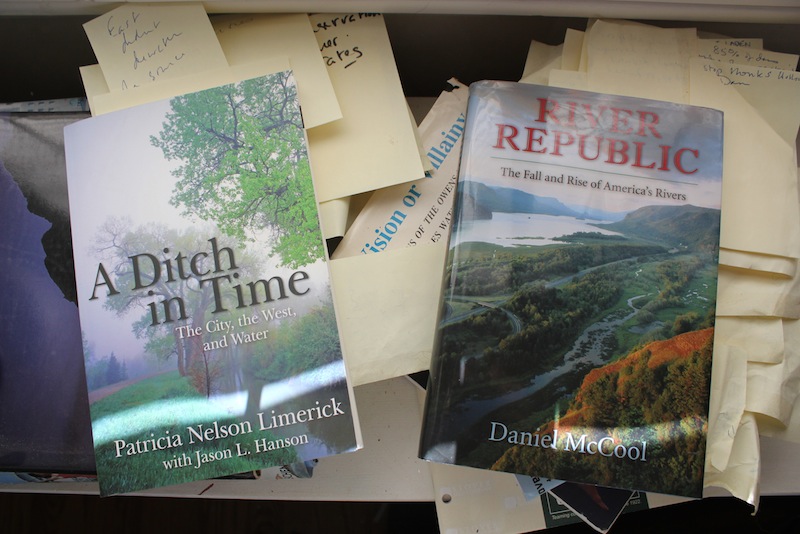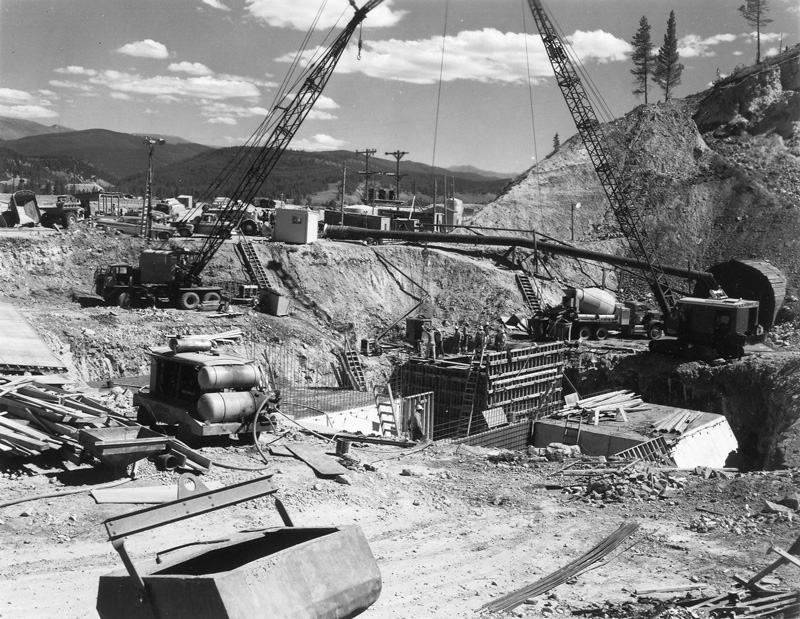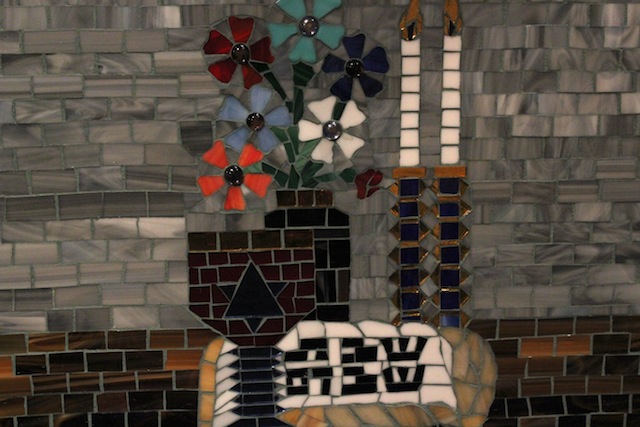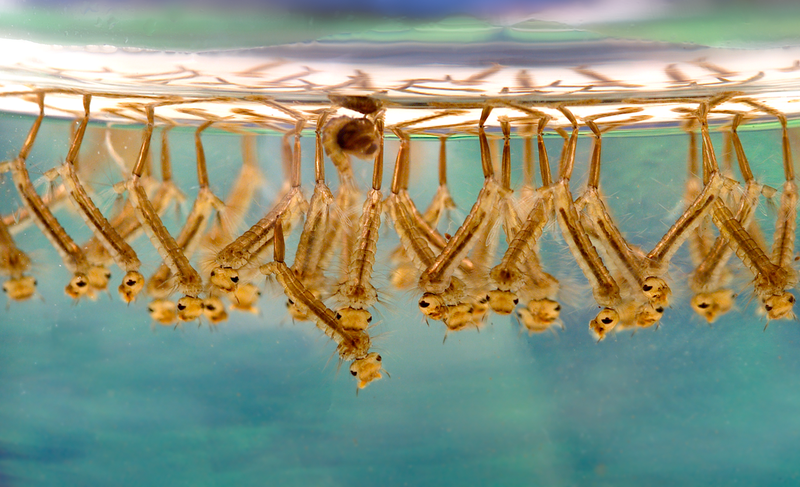Opposing faces of optimism
Posted on | October 15, 2012 | No Comments


Limerick believes that Denver Water Board attorney Glenn Saunders, who faced down the US Department of Interior to fill Dillon Reservoir (above), belongs in the pantheon of “water history celebrities” that includes John Wesley Powell and William Mulholland. Photo: Denver Water

McCool sees the demolition of the Glines Canyon Dam on Washington State’s Elwha River as an example of what is possible in reviving salmon fisheries and amenity rivers. Photo: National Park Service. Click on images to enlarge.
Two new books reviewed in High Country News present sharply opposing faces of optimism about the future of Western fresh water management. In her history of Denver Water, University of Colorado historian Patricia Nelson Limerick is frankly admiring of the men who put water in the pipe dream of Manifest Destiny. “The contemporary need for inspiration — for parables of people facing tough problems, refusing discouragement, and pressing on to solutions and remedies — is the most urgent need of the twenty-first century,” she argues in the introduction to “A Ditch in Time: The City, the West, and Water.”
Meanwhile, ” University of Utah political scientist Daniel McCool seizes on an assessment published by the American Geophysical Union that 85% of the dams in the US will be at the end of the operational lives by 2020. Americans have never had a better opportunity to remove the concrete choking rivers, he argues in “River Republic.” The rewards? Sparkling “amenity” rivers for recreation, urban waterfront parks and restored harbors for cities and revival of the fisheries that once symbolized the terrific fecundity of the American dream. As knock ons, he sees the impact to hydropower, barge transport systems and agriculture as opportunity to update and reform outdated systems. Click here to be taken to the HCN review.
Through fracture, healing and beauty
Posted on | October 14, 2012 | 1 Comment

Piece by Piece, an arts program of the Skid Row Housing Trust in downtown Los Angeles, put a stunning collection of mosaics up for sale this weekend. To see a sample of the work, click here. For more about Piece by Piece, or to support Angelenos helping themselves out of homelessness through making and selling art, click here.
Warmest January to September on record
Posted on | October 10, 2012 | No Comments

“The January-September period was the warmest first nine months of any year on record for the contiguous United States,” reports the National Oceanic and Atmospheric Administration in its latest State of the Climate update. “The national temperature of 59.8°F was 3.8°F above the 20th century average, and 1.2°F above the previous record warm January-September of 2006. During the nine-month period, 46 states had temperatures among their ten warmest, with 25 states being record warm. Only Washington had statewide temperatures near average for the period.” Click on the graphic to be taken to NOAA for the full update.
This one’s for Suleiman
Posted on | October 4, 2012 | 1 Comment

Quince paste is drying in a slow oven. It’s taken 18 months to get to this point and the entire venture started as an accident. The recipe used to make it is problematic and the result is proving stubbornly sticky to the touch. Yet it’s so damn delicious that I’d proudly serve it to Suleiman the Great.
When the bare root sapling that provided the quinces was planted as part of a fruit tree allee in the winter of 2010, the plant tag read “Santa Rosa plum.” When the plant that subsequently flowered, leafed out and fruited looked like a Dr. Seuss cartoon of an apple tree, it was clear that this was no plum. The Seuss fruit was a quince.
Raw, quinces are odd and unappealing. The form is bulbous, the skin fuzzy, the body disarmingly hard and light, and the flesh a dry maze of what seems like tough cellulose. It takes cooking to tease out a quince’s pear-like aromatics, suppleness and rich store of pectin. So, as small crop of quinces ripened this autumn, for a paste recipe, I turned to the 2002 book Chez Panisse Fruit, by Alice Waters.
Click here to keep reading about cooking for Suleiman in the LA Weekly, and here for a report by Felicia Friesema on quinces appearing in local farmers markets.
High good, low bad: Mead in September 2012
Posted on | October 1, 2012 | No Comments

Photo: James Gathany, Centers for Disease Control / Wikipedia. Click on the image of Culex genus mosquito larvae to be taken to a Los Angeles County Vector Control District guide to local mosquito species.
Lake Mead’s closing elevation last night at 1,115.13 feet, or at approximately half-full, prompted New Mexico-based science writer John Fleck to wonder what Arizona, Nevada and California did with all the water sent down the Colorado River by northern states? “Waste it on hookers and blow?”
Did we? Why didn’t I get any? Here in Southern California, at the tail end of a far drier than usual local rain year, roughly half of the million or so acre feet of Colorado River water delivered to urban users from Ventura to San Diego most likely went to car washing, in pools and on lawn. Given the imprecision of hoses and lawn sprinklers, as much as a quarter of that water probably spilled into gutters. As this overflow puddled in storm drains, it created ideal conditions for mosquitoes and a bumper West Nile virus season. So Fleck is almost certainly right to suspect we wasted our manna from the north. It can even be said that we got a buzz on. Only it was the wrong kind.
Update: In a follow-up to his hookers and blow post, John Fleck desalinates his language for anyone so delicate as to have taken offense. Look at the entitlements versus delivery obligations for the Lower Basin states on the Colorado River, he writes, and without surpluses “the Lower Basin is inevitably going to drain Lake Mead.”
Tags: chance of rain > John Fleck > Lake Mead > Water Year 2011/12


